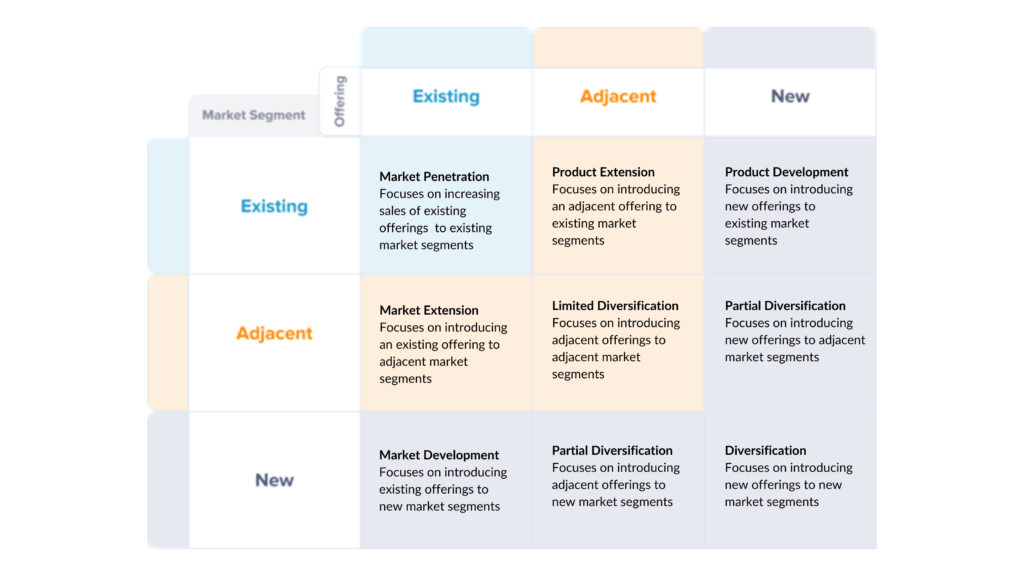
In a classic Indian fable, a group of blind men encounters an elephant for the first time. Each man touches a different part of the elephant and, based on that limited experience, forms an idea of what they might have touched. The one who touches the trunk perceives the elephant as a snake, the one touching the tusk believes it is a spear, and so on—each believes to have touched something different. In a renowned strategy book, this story is used to conclude that “We are the blind people and strategy formation is our elephant.”[i] Many engage in discussions about strategy, often confining themselves to specific aspects while disregarding the broader picture. Their perspectives remain limited, failing to generate a comprehensive understanding of the complexity of the whole. While the term “strategy” is widely used, it often tends to be misused and abused.
The reality is that a company’s strategy is built upon distinct choices—decisions informed by thoughtful questions. When you possess clear and precise answers to these questions, that’s when you know that you have a strategy.

A critical starting point involves evaluating if the company is in the right place, meaning whether it is in an attractive sector where it has an advantage. The place where the company competes is a product of its origins, but this does not mean that it should stay there forever. In fact, there are many companies that started in one place and entered new places or indeed exited some. It’s worth noting that companies might operate across various industries, which may have very different attractiveness and/or comparative advantage.
A competitive advantage is attained when a company consistently outperforms its rivals, achieving superior performance in the marketplace. One measure that can be used to determine the presence of a competitive advantage is Return on Invested Capital (ROIC), which evaluates the efficiency with which a company utilizes its capital to generate returns. A consistently high ROIC suggests that the company can generate superior returns—a key factor in achieving long-term success and outperforming competitors. Thus, companies with a sustained competitive advantage often exhibit higher and more stable ROIC over time, indicating that they are in the “right place.”

The second question involves determining whether the destination is clear. Sometimes referred to as the winning ambition, the destination should encompass a clear vision, illustrating how the company should appear at the end of the strategic journey; an inspiring mission, articulating the core purpose of the company; and the so-called Level of Ambition, a set of concrete, measurable metrics that provide a quantitative expression to the qualitative vision and mission with clear FROM and TO values. These metrics can also be termed “measures of success”: if the company attains these targets, it has successfully executed its strategy.

Having already assessed whether it possesses a competitive advantage, a company should conduct a thorough analysis of its internal capabilities to determine the key drivers of its competitive advantage and how they compare to market benchmarks and its major competitors. By assessing its strengths and weaknesses, the company will be able to visualize its Capability Matrix, which outlines what Prahalad and Hamel term as the Core Competence of the corporation along with its Core Weaknesses.

Then comes the question around the so-called “playing field”: Can the company achieve its ambition by penetrating deeper into its existing market spaces, or should it venture out into new products and market segments? A company should be clear about where it currently plays, where it could play in the future, but also, critically, where it should not be playing. This involves assessing how attractive the market spaces are where the company already operates and where it could potentially enter in terms of size, growth, profitability, competitive rivalry, and barriers to entry. More importantly, it involves assessing the likelihood of being competitive by looking at the core strengths that could be leveraged to win.


A fifth question involves deciding how to reach the desired Level of Ambition. The primary avenues for success in the market and achieving a competitive advantage are cost leadership and differentiation. Cost leadership entails achieving lower production costs or operational efficiency compared to competitors, allowing the company to offer products or services at a lower price. Differentiation involves creating unique products or services that stand out from competitors, attracting customers willing to pay a premium for exclusivity. A hybrid approach seeks to gain a competitive advantage by delivering products or services with distinctive features while keeping costs low. However, this approach is typically seen as a derivative. This means that a company may start with a cost leadership or differentiation strategy and become so successful that it ends up pursuing both. Winning means, therefore, choosing strategic and enabling priorities that empower the company to pursue the chosen avenue.

The five questions addressed thus far are, in fact, a prerequisite, constituting merely 10% of the effort required in the journey toward strategic success. The pivotal question determining the remaining 90% centers on strategy execution. This involves considering two main perspectives. The first pertains to properly defining initiatives, actions, and projects that must be implemented to set the strategy in motion. The second focuses on removing obstacles to successful strategy implementation, encompassing clear communication of the strategy, preventing the development of resistance to change, and ensuring that all necessary resources are in place.
Remember: it is far more advantageous to execute an average strategy well than to execute an amazing strategy poorly.
[1] Henry Mintzberg, Bruce Ahlstrand, Joseph Lampel, Strategy Safari: The Complete Guide through the Wilds of Strategic Management (Harlow, UK: FT Prentice Hall, 2009).
Davide Sola and Jérôme Couturier, How to Think Strategically: Your Roadmap to Innovation and Results (Harlow, United Kingdom: Pearson Education Limited, 2014).
Alan G. Lafley and Roger L. Martin, Playing to Win: How Strategy Really Works (Boston, Massachusetts: Harvard Business Review Press, 2013).
C.K. Prahalad and Gary Hamel, “The Core Competence of the Corporation,” Harvard Business Review, May-June 1990, https://hbr.org/1990/05/the-core-competence-of-the-corporation, accessed October 2023